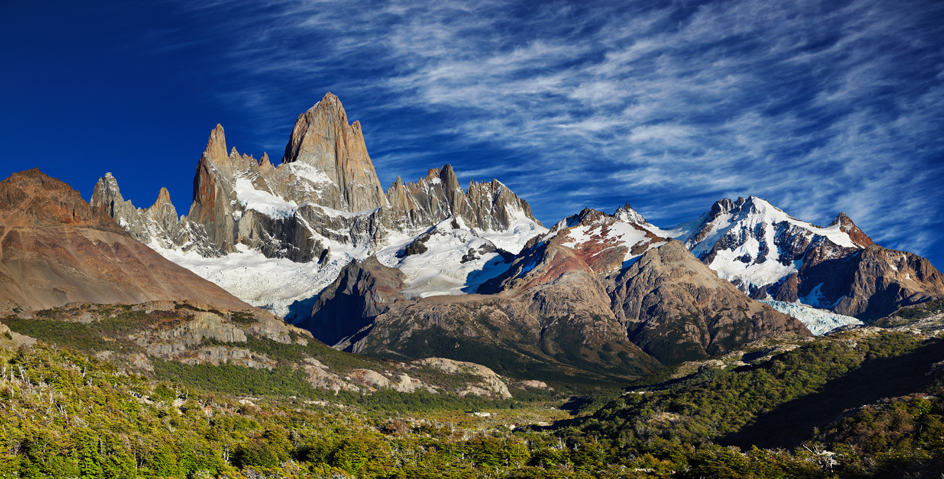Patagonia << `pat ` uh GOH nee uh >> is a region in southern South America. A large part of the region has a semidesert climate. Indigenous (native) peoples lived in Patagonia long before Europeans arrived. The name Patagonia comes from the Spanish word patagon, which means big foot or paw. The native Tehuelche people were tall and wore large boots stuffed with grass.
In 1520, the Portuguese navigator Ferdinand Magellan became the first European to explore the region. In 1865, Welsh settlers arrived in northern Patagonia. A boundary dividing Patagonia between Chile and Argentina was resolved in 1902, based on agreements stemming from an 1881 treaty.

The term Patagonia usually refers to the Argentine section of the region, which includes the southern Argentine provinces of Río Negro, Chubut, Santa Cruz, and Tierra del Fuego. Farmers in Argentine Patagonia raise sheep and grow fruits and vegetables. Hydroelectric projects on the Limay River in northern Patagonia provide electric power. Oil fields in Patagonia yield much of Argentina’s petroleum. The region also has coal, iron ore, and natural gas deposits.
Chilean Patagonia is composed of two subregions—the northern Aisen region and the southern Magallanes region. Forestry and tourism are important economic activities in Chilean Patagonia.
